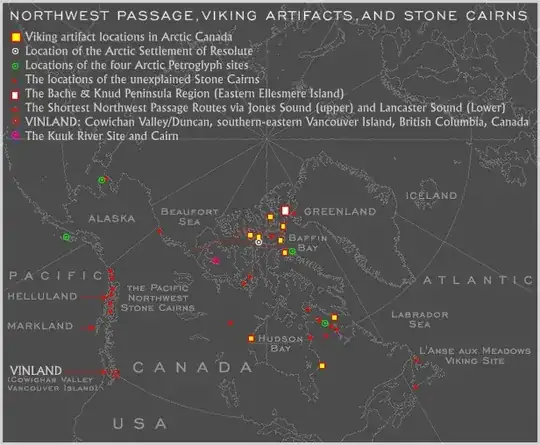I think the main difficulty in getting a good answer to this question is the tenuous nature of the evidence and the confirmation bias that people experience when they are looking to support their pet cause. A Google Search provided me with numerous citations, and cover the well known facts to this point (Greenland to the Maritime Provinces and New England). What causes additional confusion could be things like:
- Convergent cultural evolution in the Pacific Northwest tribes and a superficial similarity with Viking technology. If you are looking for a similarity, it's easy to see one.
- Because something is mysterious or unexplained doesn't mean that any answer you provide is the correct answer. This happens a lot, and even has a logical fallacy named for it, Ad ignorantiam
- Another favorite unsupported artifact is the Kensington runestone, as well as a few others. Why not make the case with these as well if using unsupported and weak evidence such as "unexplained stone cairns"? Not to mention stone cairns are common in many, many cultures, including Native American ones.
- The temperature indeed was warmer in that particular time, however, we really don't know what enough yet about how things looked in regards to a passage.
So in answer to your question: Yes, they COULD have sailed and traveled to many locations. However, the evidence suggest they did not. All the archaeological evidence that is verifiable indicates they only sailed as far south as New England. Of course, that doesn't mean we won't find evidence that may indicate they went other places, however, it needs to be evidence, not wishful thinking.
